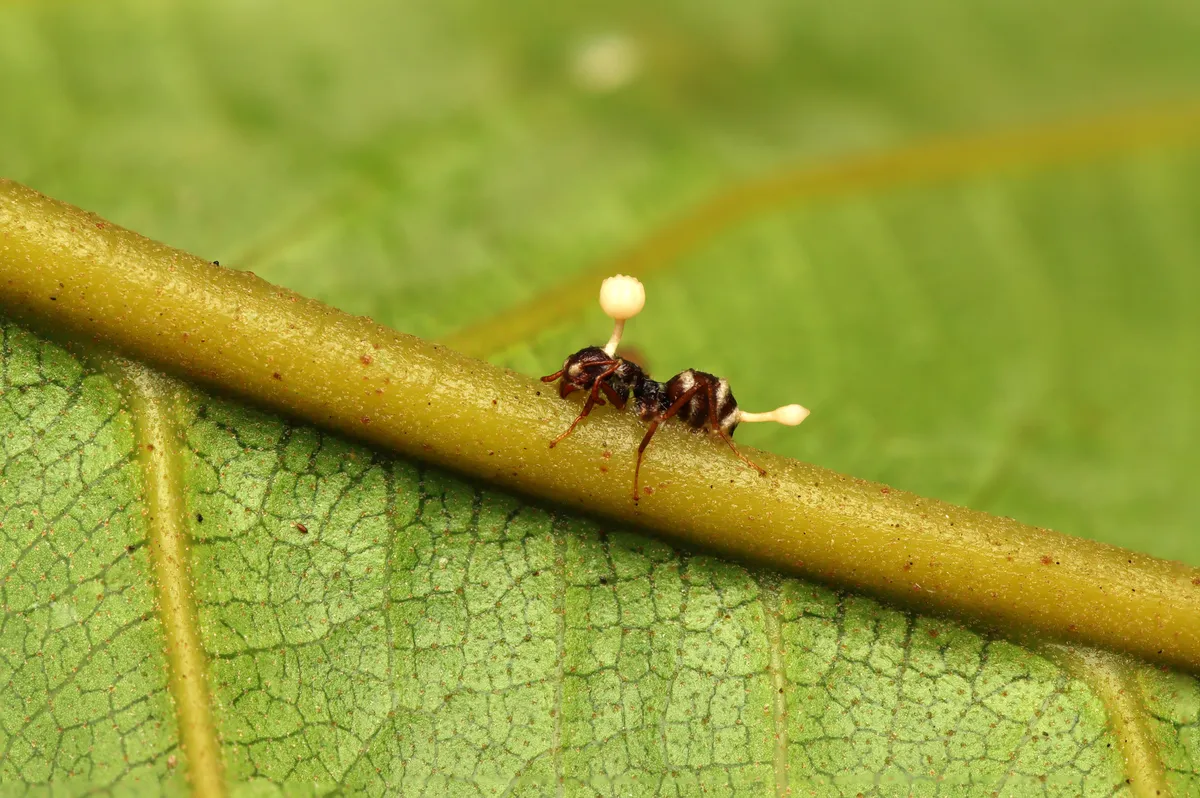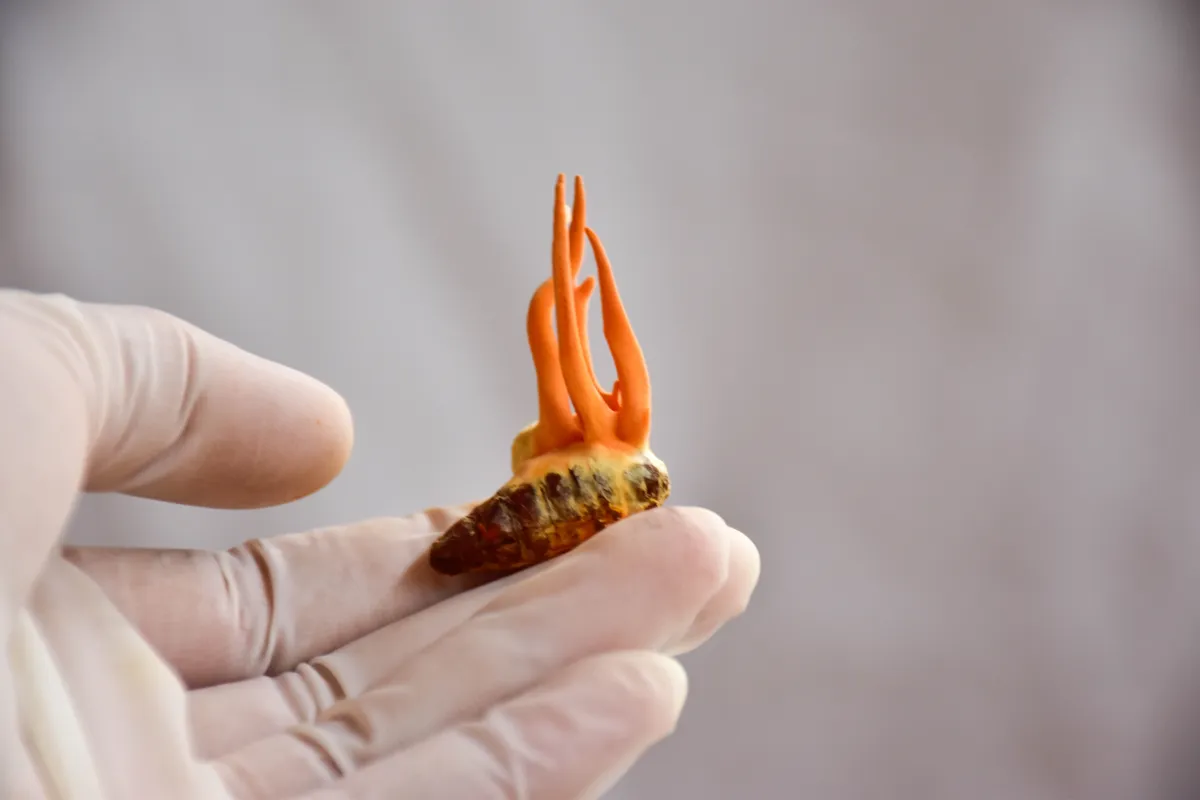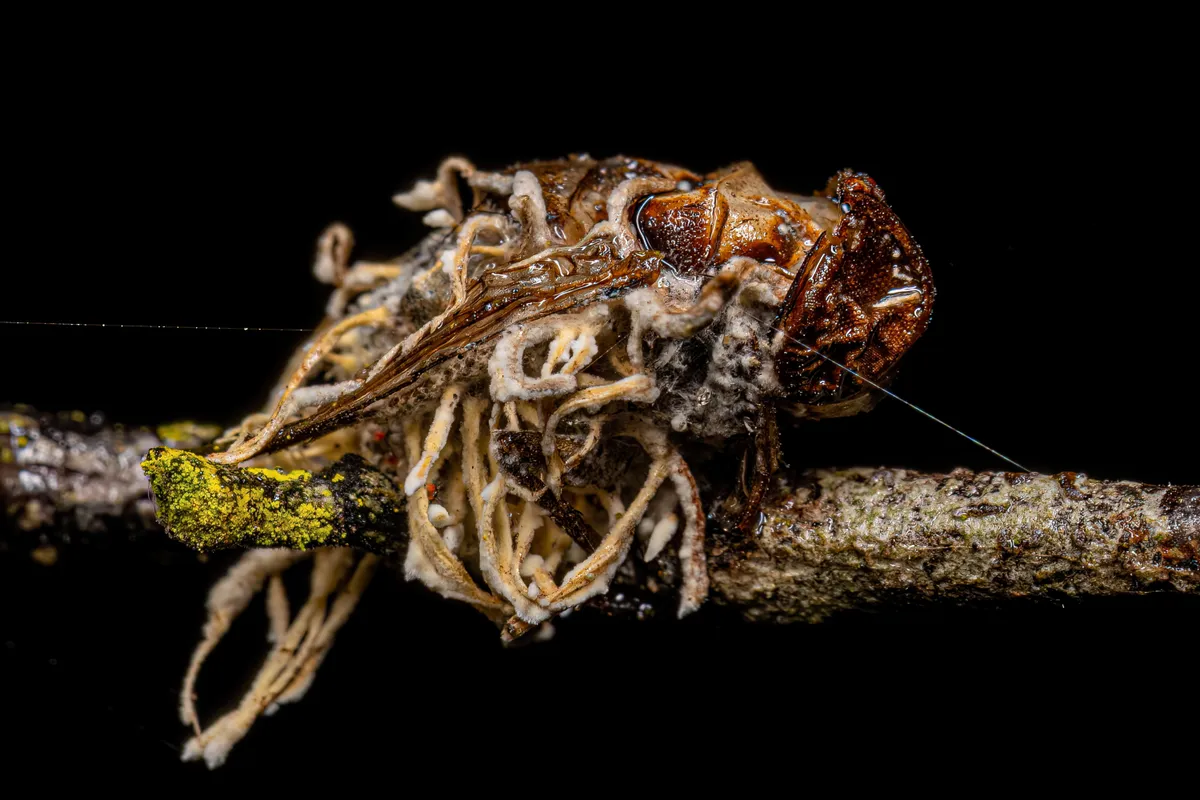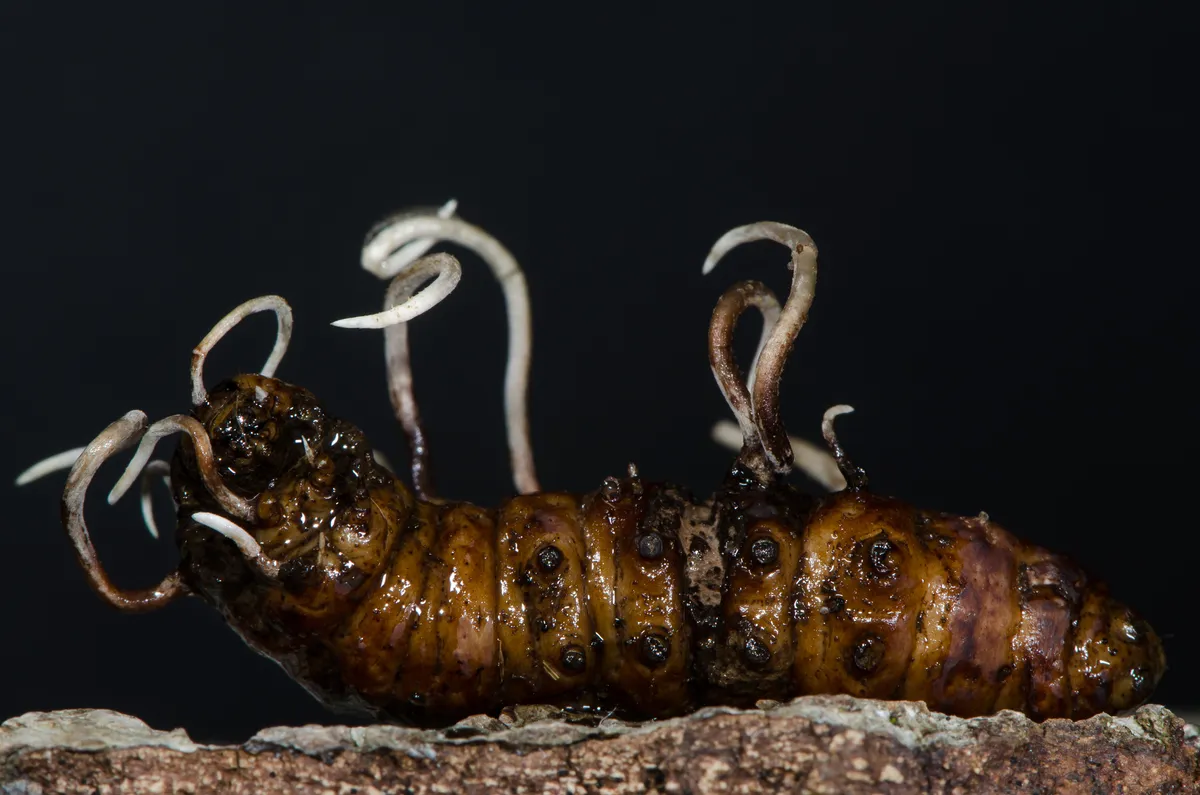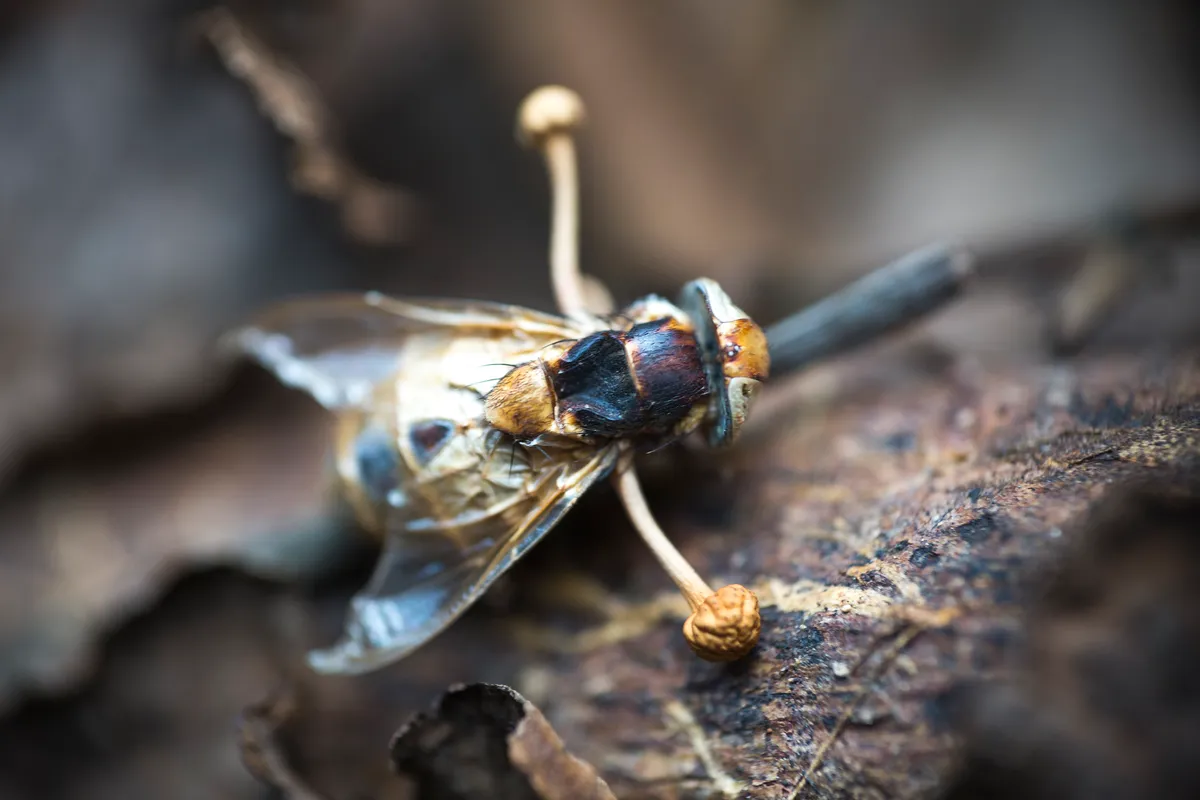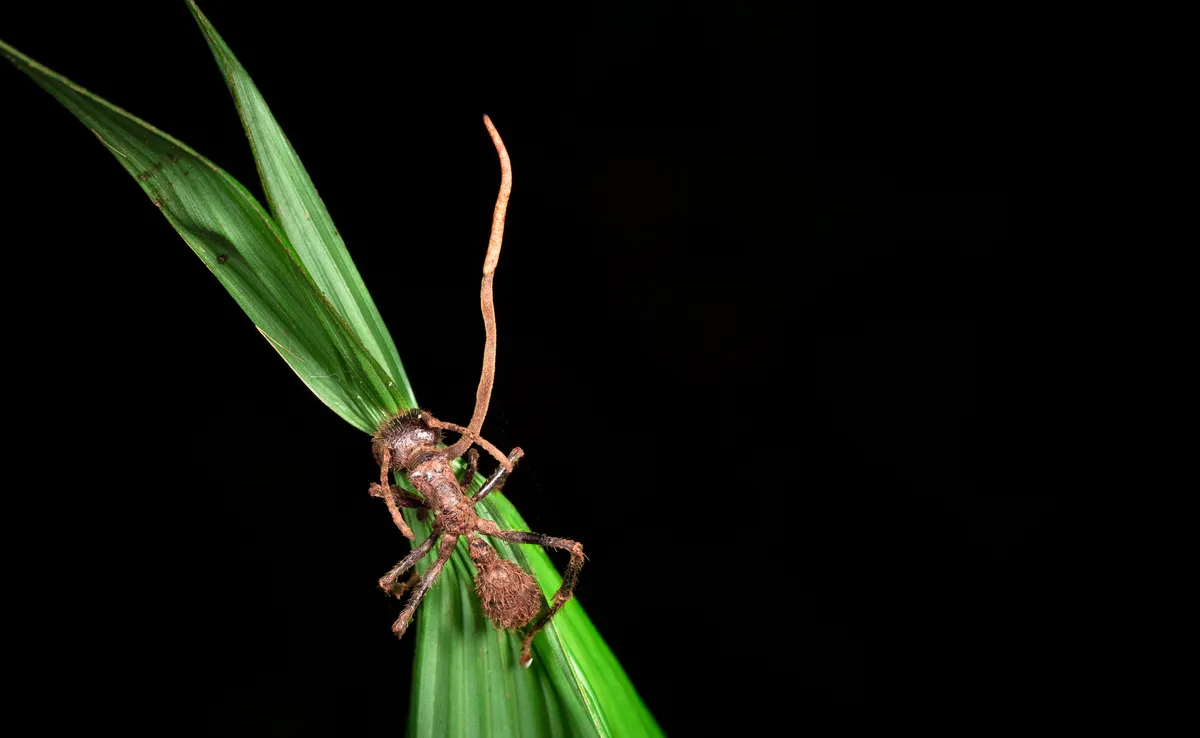What are Cordyceps and Ophiocordyceps?
Both Cordyceps and Ophiocordyceps are fungi genera, which compose of about 750 species. Many of them are parasitic, infecting insects and other arthropods with their spores.
Upon infection, some of the host tissue is replaced by the fungi’s mycelium and results in the fruiting bodies growing out from the host’s body.
The fungi also cause a change in behaviour, in order to maximise its chance to passing onto new hosts. We included these zombi fungi in our round-up of the weirdest fungi in the world.
The fungi have found fame in recent years, thanks to The Last Of Us (a video games series first released in 2013 and now adapted into a drama on Sky) and to The Girl With All The Gifts (a novel released in 2014 and adapted into a film).
In early 2025, another so-called "zombie fungus" was discovered in spiders located in caves across Ireland. Gibellula attenboroughii was named after Sir David Attenborough and was first discovered during the filming of BBC's Winterwatch in 2021. This particular fungus's behaviour mirrors that of the fungi of the genus Ophiocordyceps.
In both of these, the parasitic fungi adapted to infect humans and resulted in a pandemic of zombie-like people that bite others in order to spread the fungi, and leading to the collapse of human civilisation. In The Last Of Us, the fungi was an unspecified Cordyceps species, whilst in The Girl With All The Gifts it was Ophiocordyceps unilateralis.
O. unilateralis is also known as the zombie-ant fungus as it infects ants in the Camponotini tribe. It was first described by the British naturalist Alfred Russell Wallace in 1859.
Once infected, the ant is controlled by the fungus, which causes it to leave its nest, climb up the stem of a plant and secure itself in place with a death grip – usually about 25cm above the forest floor. Once there, the fruiting bodies grow out of the ant’s head and shower spores down onto the ground below – the aim is infect more ants.
Ophiocordyceps was once part of the Cordyceps genus but genetic analysis published in 2007 found that it, and a number of other species, were distinct enough to be placed into a separate genus, which was named Ophiocordyceps.
Can Cordyceps or Ophiocordyceps infect humans?
In The Last of Us, a scientist played by John Hannah, says “Candida, ergot, Cordyceps, Aspergillosis – any one of them could be capable of burrowing into our brains and taking control of not millions of us, but billions.”
His dire warning, given during a TV show set decades before, proves true when the challenges of climate change causes Cordyceps to mutate and become able to survive in the heat of a human body.
Despite being the inspiration behind the infected ‘zombies’ in The Last Of Us and The Girl With All The Gifts, neither Cordyceps nor Ophiocordyceps are able to infect humans.
"Our body temperature is simply too high for most fungi to nicely settle and grow - and this is the same for this Cordyceps,” Dr Charissa de Bekker, a microbiologist from Utrecht University who has studied Cordyceps, told the BBC.
"Their nervous system is simpler than ours, so it would definitely be easier to hijack the brain of an insect versus our brain, also their immune systems are very different from ours. For this fungus to be able to jump from an insect to us and cause an infection is a very big leap."
Can Cordyceps or Ophiocordyceps be useful?
The fungi O. sinensis has been used in traditional Chinese medicine.

